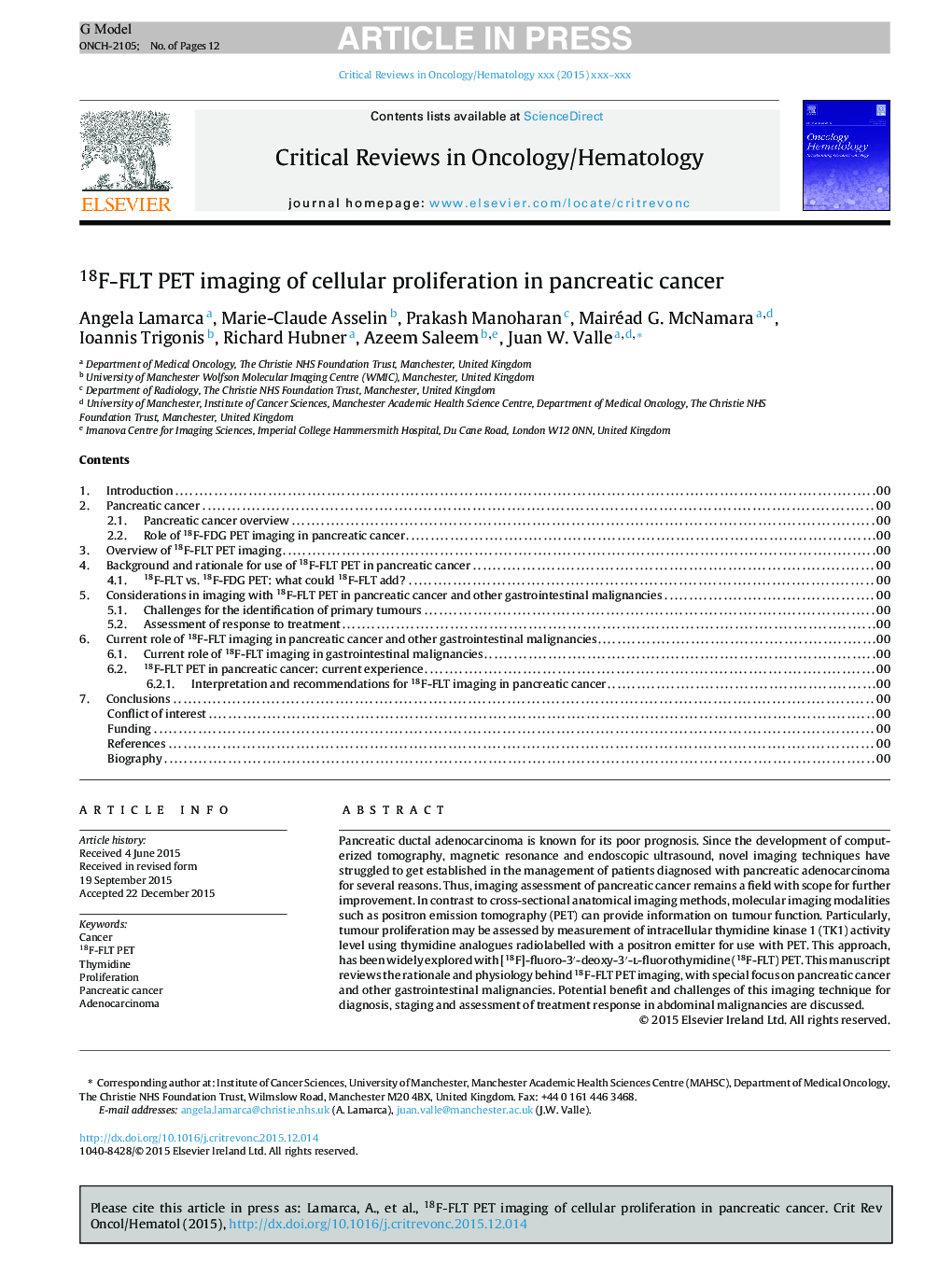| Article ID | Journal | Published Year | Pages | File Type |
|---|---|---|---|---|
| 6113552 | Critical Reviews in Oncology/Hematology | 2016 | 12 Pages |
Abstract
Pancreatic ductal adenocarcinoma is known for its poor prognosis. Since the development of computerized tomography, magnetic resonance and endoscopic ultrasound, novel imaging techniques have struggled to get established in the management of patients diagnosed with pancreatic adenocarcinoma for several reasons. Thus, imaging assessment of pancreatic cancer remains a field with scope for further improvement. In contrast to cross-sectional anatomical imaging methods, molecular imaging modalities such as positron emission tomography (PET) can provide information on tumour function. Particularly, tumour proliferation may be assessed by measurement of intracellular thymidine kinase 1 (TK1) activity level using thymidine analogues radiolabelled with a positron emitter for use with PET. This approach, has been widely explored with [18F]-fluoro-3â²-deoxy-3â²-l-fluorothymidine (18F-FLT) PET. This manuscript reviews the rationale and physiology behind 18F-FLT PET imaging, with special focus on pancreatic cancer and other gastrointestinal malignancies. Potential benefit and challenges of this imaging technique for diagnosis, staging and assessment of treatment response in abdominal malignancies are discussed.
Related Topics
Health Sciences
Medicine and Dentistry
Hematology
Authors
Angela Lamarca, Marie-Claude Asselin, Prakash Manoharan, Mairéad G. McNamara, Ioannis Trigonis, Richard Hubner, Azeem Saleem, Juan W. Valle,
